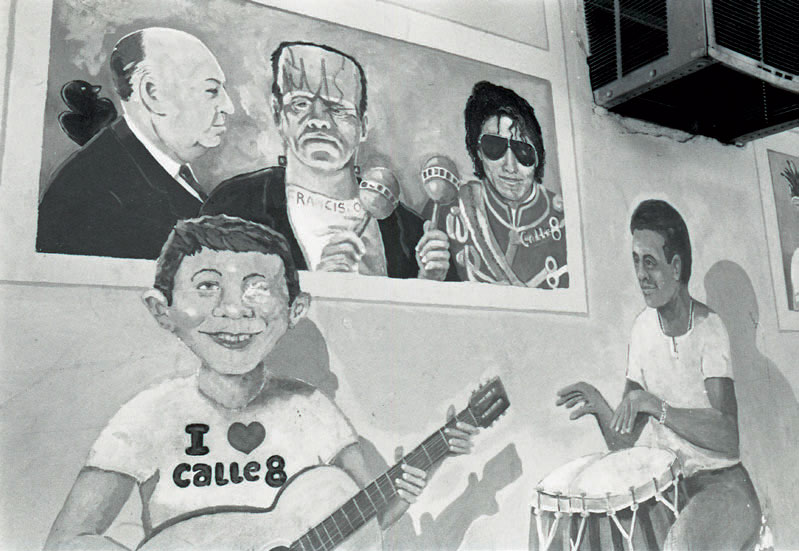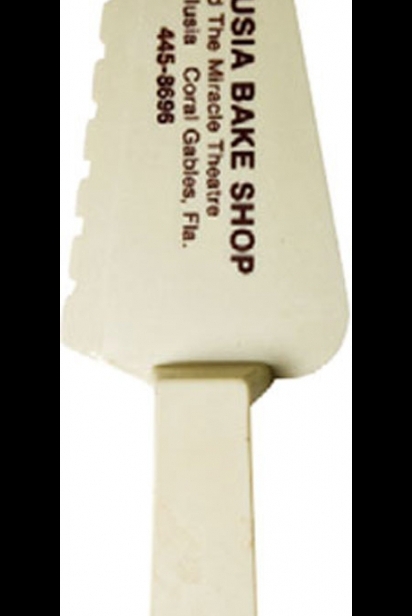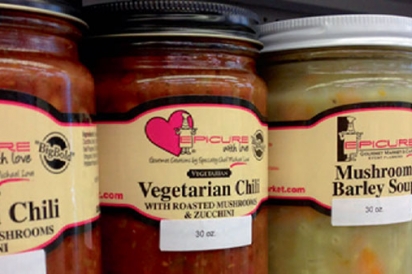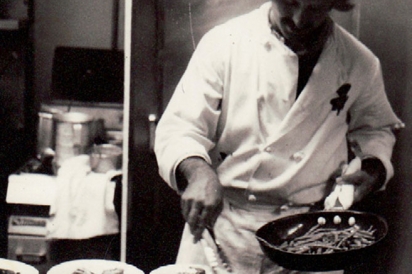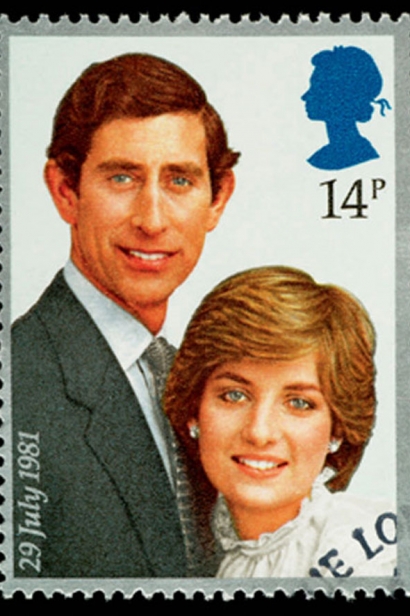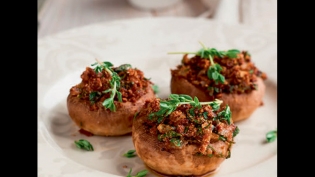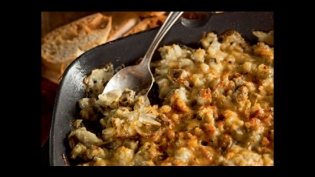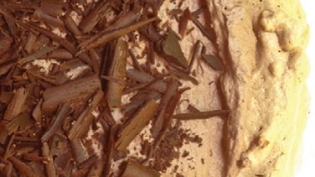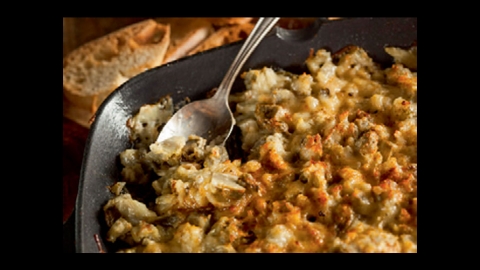Miami, 1981
Murders. The Mariel boatlift. A petty crime wave that touched nearly everyone. Wounds, left by the riots in Overtown and Liberty City, barely scabbed over. TIME Magazine’s infamous cover of Nov. 23, 1981, showed a flashy collage of guns, cash, cocaine and busts under the question: PARADISE LOST?
South Beach’s Art Deco District – despite being named only a few earlier as the nation’s first 20th-century historic district – had been dubbed God’s Waiting Room because of its senior population. Decorator’s Row – the Design District – was an interior design center, mostly for the trade. Coconut Grove was the bustling epicenter for tourists and locals, who packed restaurants and cafes and glamorous nightclubs.
And toiling in the heat, amid the sea of French and Italian restaurants that largely defined South Florida’s unremarkable culinary scene in the early 1980s, were a handful of individuals laying the foundation for what we eat today.
In Turnberry Isle, chef Allen Susser was serving well-heeled guests mamey he collected on his trips to the Redland. In Coconut Grove, restaurateur Monty Trainer was making sure the Caesar salad served at The Village Inn, met customer expectations. In Key West, chef Norman Van Aken was plating stuffed veal chop with Marsala, waiting for the next “The Good Cook” installment from Time-Life Books to arrive.
“It was a different Miami, on the verge of a Renaissance,” recalls Susan Brustman, now semi-retired from Brustman Carrino, the public relations firm she founded in 1985. But any culinary rebirth was still far away when Brustman first went to work for Hank Meyer to learn the PR business in the early ‘80s. “I used to go back to New York just to eat.”
Working in the neighborhood of Biscayne Boulevard between 20th and 30th streets, Brustman ate at Arthur’s Eating House and the S&S Diner, still mostly unchanged over the decades. “You’d line up at the counter for big plates of turkey, gravy, cranberry sauce.” She remembers Gibby’s in Fort Lauderdale and their rack of lamb; Cafe Chauveron, The Forge and Joe’s for special occasions; Marcella’s for garlic rolls; and classic Jewish restaurants Pumpernik’s, Rascal House and The Famous Restaurant, on Washington between 6th and 7th streets. The owners of The Famous closed it in 1981, citing crime and the decline of South Beach, but fittingly, it gained renown when its new owners created The Strand, bringing artsy New York chic to the SoBe scene in its infancy.
On the other side of South Beach on Alton Road, Epicure Market was doing a booming catering business in 1981, says executive chef Hector Morales, who started with the family-owned grocery and catering business in 1966 and remains there today. “We were doing luaus, sweet and sour meatballs, Polynesian chicken and pork loins, canapes and tea sandwiches, salmon and caviar,” says Morales. “People liked potatoes – steak fries, potatoes Anna – and lots of roasts and prime meats.” They sold chocolate blackout cake and lots of cookie platters, both still popular today. Lincoln Road, today a nonstop stream of tourists and locals, was quiet in 1981, he says. “You could park anywhere you want.”
GO TO THE GROVE
In South Florida in 1981, it was Coconut Grove that was the sparkling hub of shopping, dining and culture, anchored by the Playhouse, says longtime restaurateur and Coconut Grove Arts Festival president Monty Trainer. “There were big spotlights, limos, really a social happening, cast parties and celebrities like Bea Arthur and Tony Randall,” he recalls. “This was the end of the hippie era of the 60s and 70s ... it got too expensive.” The Grove of the early 80s catered to affluent South American and New York tourists, UM students and locals at places like the Taurus and The Village Inn, Cafe Europa, Kaleidoscope and Horatio’s at the Coconut Grove Hotel. Mayfair in the Grove, the lush, upscale shopping center that opened in 1979, brought in high rollers of all stripes for shopping and nightlife. “There was more of a club scene: Regine’s, Faces in the Grove, the Mutiny,” says Trainer.
Caterer Bill Hansen remembers Coconut Grove in 1981. He’d been looking for an event venue and found it in Villa Woodbine, the Walter de Garmo-designed mansion on South Bayshore Drive. “It had been a party house, a hangout for the Village People, Mary Wilson from the Supremes,” he says. While Hansen worked to get the 1931 property in shape for functions, he was busy operating the Miami Club, one of six downtown city clubs that served as dining and drinking enclaves for businessmen – women were not allowed until 1982. “By the 1980s, it was the end of the three-martini lunch,” he says. “We served Irish lamb stew, meat loaf and what was on the rolling cart – leg of lamb, prime rib, corned beef and cabbage, tenderloin, brisket.” Catering his first party at Vizcaya in 1981, Hansen says the menu included sliced tenderloin, Caesar salad, honey coconut shrimp, crab and lobster fritters, skewered chicken and key lime tart. “No sushi yet,” he said. “Simple wines like Merlot – people weren’t into fine wines. No cosmos or craft beer, just Heineken, Amstel, Miller Lite, Bud.”
Hansen was busy at the Miami Club, one of six downtown city clubs that served as dining and drinking enclaves for businessmen – women were not allowed until 1982.
Social clubs were another place to find good meals in the early 80s. “The Jockey Club, the Cricket Club, the Mutiny were where people could go to socialize, for food and drink,” recalls Allen Susser, who was at Turnberry Isle Yacht & Country Club in 1981 after spending time in the kitchens of Le Cirque in New York and Le Bristol Hotel in Paris. “Turnberry wanted to have the best food in the South,” he says. Susser was serving red snapper with caramelized bananas, a warm salad of mushrooms, local grouper and snapper fresh from the boats.
His pioneering restaurant, Chef Allen’s, would not open until 1986. But the winds of culinary change were blowing from the west in California. “The world started to turn, and with it cuisine that didn’t have to be French or Italian,” Susser says. He visited Jeremiah Tower and Wolfgang Puck to see firsthand what they were doing in their restaurants. “I asked them about California cuisine,” he says. “‘What’s that?’ they asked.” Showcasing fresh produce grown by local farmers just made sense. California wines, cheese and butter and other products were getting attention as part of the new American cuisine that James Beard and Julia Child were writing about. “Times were changing,” Susser says. For him, the early 80s were spent tracking down produce from small farms in Homestead and the Redland at Robert is Here and Brooks Tropicals. “You had to go find it,” he recalls. “I would ask them to set aside ripe mamey and tropical fruits to use.” When Allen did open Chef Allen’s, he launched his “bring us your backyard fruit” campaign, asking home growers to trade their mangos in return for dinner for two – an inventive way to bring about farm-to-table awareness, to say nothing of making sure there were plenty of tasty mango dishes on the menu.
READ ALL ABOUT IT
Popular cookbooks reflected the changing tastes of the American public in 1981. The energetic Richard Simmons, who brought to life the fitness craze on talk shows, wrote the bestseller Never-Say-Diet Book. In a nod to the nouvelle cuisine movement still underway in France, The New James Beard Cookbook used lighter ingredients and less butter and cream, while The Chez Panisse Cookbook featured Alice Waters’ recipes celebrating California ingredients. Not every book targeted the health-conscious. Miami Beach dessert doyenne Maida Heatter’s bestselling Book of Great Chocolate Desserts gave cooks an entire chapter on flourless chocolate cakes. The Silver Palate Cookbook by New Yorkers Julee Rosso and Sheila Lukins introduced home cooks to their Manhattan food shop, with recipes for newly popular crudites, things to do with wheels of brie, and their signature line of preserves, vinegars and sauces. Trendsetting Miamians started serving New York City-inspired party fare – cheese tarts and beggar’s purses made of tiny crepes filled with caviar and creme fraiche.
But it wasn’t until 1982 that a coffee-table book called Entertaining, by caterer Martha Stewart, inspired home cooks to cater their own fabulous dinner parties. Gorgeous but also practical, Entertaining was more than the beginning of the domestic diva’s ascent as a multimedia superstar, launching a new casual dining approach that celebrated the bounty of the garden and elevated simple, unfussy, well-prepared dishes for parties. It inspired a new wave of beautiful cookbooks in the 1980s, including designer Lee Bailey’s Country Weekends and Glorious Food from top New York caterers. The rustic chic influence in South Florida was reflected at McMead’s in Coconut Grove, a takeout deli and caterer that brought pasta salads, meat loaf and snow-pea and endive appetizers. Another innovator was David Harrison, whose Food Among the Flowers in the Design District was a “fantasy world of waterfalls and flowers and beautiful food and presentation,” recalls Brustman.
34 YEARS LATER
South Florida 2015 has become a serious dining destination – no small accomplishment – but like any U.S. metropolitan area, much of that is fueled by food-obsessed consumers. “If you had told me in 1981 that one day there would be a Food Network, I would’ve thought you were crazy,” says Brustman. Today, thanks to Martha, cooking shows and The Knot, catering clients today are much more informed, says Hansen. In 1981, “clients trusted you. Today, we give a tasting menu. We have to be creative.” For Hansen, that means cooking Kobe beef on hot salt slabs and serving S’mores in mini Mason jars instead of relying on chafing dishes.
National trends in dining and drinking are well represented: local sourcing everywhere, artisan fare, craft beers and cocktails; oyster bars; ceviche and sushi bars; steakhouses; vegetarian, vegan and plant-based menus; Spanish and Basque cuisine; and quality choices in tacos, pizza, burgers and pub grub. Still, those choices would have occurred anyway in a metropolis of 4.5 million people. The farm-to-table movement, however, has taken on a distinct subtropical flavor as a new crop of farmers grows exotic fruits and vegetables that reflect the tastes of an increasingly diverse set of consumers. These residents are from Central and South America, the Caribbean and Europe, joining the Cuban, Haitian, New York, Jewish and white population here three decades ago when “the multicultural flavor was brewing,” Brustman says. That mash-up eventually led to New World cuisine, further articulated in books by Allen Susser and Norman Van Aken in the 90s, and in their restaurants and others. They kickstarted today’s wide use of South Florida’s own subtropical bounty – mango, yes, but also sour orange, guava, sapodilla, jackfruit and seafood, to name just a few examples.
Painful as some of the events of 1981 were, they helped shaped South Florida today. “Mariel and the Overtown riots changed the way we looked at ourselves,” says Susser. “And the population shift in Miami changed the dynamics. We moved from being a transient population to one that stays in.”
A popular bumper sticker in the 1980s read: “Will the last American leaving Miami please bring the flag?” Today, the sentiment feels as dated as a Grits/Fritz campaign button. Call it, finally, a new pride in ownership.
Epicure Market, Now and Then
Chef Hector Morales, left, says Epicure still sells its popular smoked whitefish salad and jars of mushroom barley soup. But now there’s vegetarian chili with roasted mushrooms and zucchini, part of specialty chef Michael Love’s Epicure with Love line; local artisan Laurie’s Pantry granola; and an impressive selection of balsamic vinegars, among other specialty products. Epicure has also added two new locations, in Sunny Isles Beach and Coral Gables.
NORMAN VAN AKEN IN KEY WEST IN 1981
JANUARY: I was back cooking at The Port of Call restaurant in Key West after having spent about a year before that cooking “out on the boulevard” at Chez Nancy. We lived in Old Town and I could ride my bike to work. We started buying the Time- Life “The Good Cook” series which became my cooking school since I couldn’t go to one. It was a fantastic learning curve for me that arrived in bimonthly installations. We would go to The Full Moon Saloon for the famous fish sandwiches. We loved to get caldo gallego at the Cuban places. Beer-steamed shrimp was always a standby. At the Port we served conch chowder, black bean soup, crab-stuffed avocado salad, spinach salad with sauce piquant, roast half duck with cumberland sauce, Caesar salad, crabmeat-stuffed snapper with sauce bearnaise, roast rack of lamb, stuffed veal chop with Marsala, and a wildly popular Keys dish called by various names, but it was “Fish and Fruit” at the P.O.C. We served chocolate mousse pie, strawberries Romanoff, key lime pie and (also hugely popular there) Ponchartrain pie.
APRIL: I wrote Mama a letter from Key West and included my resume! That was a first. I asked her to have her ear to the ground on where I might look to cook at when we moved back North. I listed the following places that interested me: Alouette, Café Provençal, Le Titi de Paris, Froggy’s, Le Vichyssoise and Le Francaise. It seems French was the far-and-away main goal for me. “
MAY: Justin’s first birthday party. We went to Bahia Honda State Park in the Keys. We made ham, chicken and a chocolate cake for the party.
JUNE: We moved back to Illinois. Mama came down and she and Justin flew north. I couldn’t find work in a restaurant for a while, so I took the time to landscape my Mom’s huge backyard.
GONE BUT NOT FORGOTTEN
Victoria Station
Jumbo’s, Miami
Mike Gordon’s Seafood, North Bay Village
George’s Sub Shop, Tamiami Trail
Jimbo’s Place, Virginia Key
El Cid, Miami
Beefsteak Charlie’s, multiple locations
Picadilly Hearth, Design District
STILL HERE
Captain’s Tavern
Shorty’s Bar B Que
Fox’s Sherron Inn
Churchill’s Pub
S&S Diner
Tropical Acres Steakhouse
Versailles in the 1980s, taken for the project, Tropical Traditions: The Folklife of Southeast Florida, that ran from 1989-1991. The South Florida Folklife Center was at the Historical Association of Southern Florida (the former name of HistoryMiami). Image by Michele Edelson.
WHAT HAPPENED IN 1981
Lean Cuisine frozen dinners were created as a healthier choice to Stouffer’s. PETA – People for the Ethical Treatment of Animals – was formed. New in the marketplace: Yukon Gold potatoes, Jell-O Gelatin Pops, Butterflavored Crisco, California Coolers.
Lady Diana Spencer married Prince Charles on July 29, 1981.
WHERE WE ATE OUT IN 1981
Favorite restaurants, according to a Miami News poll in May 1982:
Overall Best
Daphne’s Restaurant and Lounge, Sheraton River House
Smitty’s Coffee Shop, Miami
Lucky Duck, N. Miami Beach
Cafe Chauveron, Bay Harbor Islands, Coconut Grove
Cuban
Lila’s Restaurant, multiple locations
Centra Vasco, Little Havana
Versailles, Little Havana
Barbecue
Tony Roma’s
Pit Barbecue, west Dade
Bobby Rubino’s
Deli
Rascal House, N. Miami Beach
Pumpernik’s, North Miami and South Dade
Marshall Majors, South Miami
Health Food
Unicorn Natural Food Restaurant, North Miami
The Spiral Restaurant, Coral Gables
Granny Feelgood’s, downtown Miami
COMFORT FOOD IN 1981
The Burger Wars were just getting started. McDonald’s, Wendy’s (just having arrived in South Florida two years ago) and hometown giant Burger King were at each other’s throats. Meanwhile, our oldest burger chain, Royal Castle, was winding down operations with only a handful of stores left – they were once over 170 locations strong. Wuv’s, the better burger chain founded by Jack Penrod, was still around but a year away from closing shop. Another favorite, Sambo’s (open 24 hours) filed for bankruptcy in 1981 and would be down to just one restaurant, the original in Santa Barbara, the following year. Lum’s, the South Florida institution, was still serving their popular beer-steamed hot dogs. You could get your wiener fix at Arbetter’s, in its 21st year of business, and Nathan’s, with a couple of locations.
– Sef Gonzalez, Burger Beast
MEMORY LANE
Block out time for these sites:
Don Boyd has amassed an impressive collection of images from South Florida, including restaurants, bars, grocery stores and much more. www.pbase.com/donboyd
Miami Archives posts images of old Miami, including restaurant menus and newspaper ads. miamiarchives.blogspot.com
Sef Gonzalez, (burgerbeast.com), exhaustively and authoritatively reports on all topics related to comfort food and collects memorabilia. His new project is burgerbeastmuseum.com.
The Special Collections, University of Miami Libraries, is building the Florida Culinary History Collection.
TASTE OF MIAMI, 1981
These favorites, culled from popular cookbooks, chefs and recipe boxes in the Eighties, are ripe for a comeback.
Tropical Wine Cooler
Stuffed Mushrooms
Artichoke Dip
Le Festival Salade Monte Carlo
Epicure Polynesian Chicken
Chocolate Coffee Angel Pie


